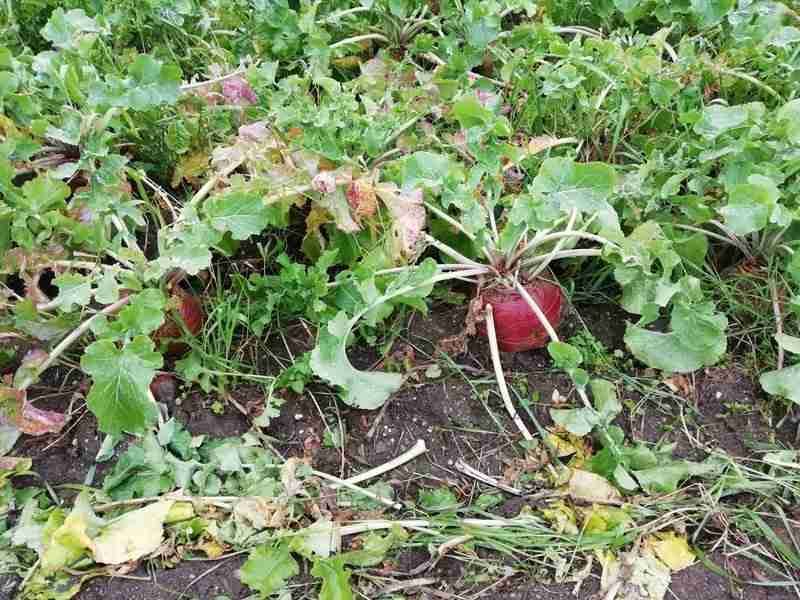In this article, I will be covering how to grow Turnips (and Swedes), how long turnips take to grow, how to nurture them through the early (risky) period, and the pests and diseases you may encounter along the way.
Turnips
Turnips and swedes are similar vegetables although slightly different. A turnip usually grows smaller in size and more oval in shape, it has a whiteish underbelly with either a purple or green top but inside it will have a white flesh.
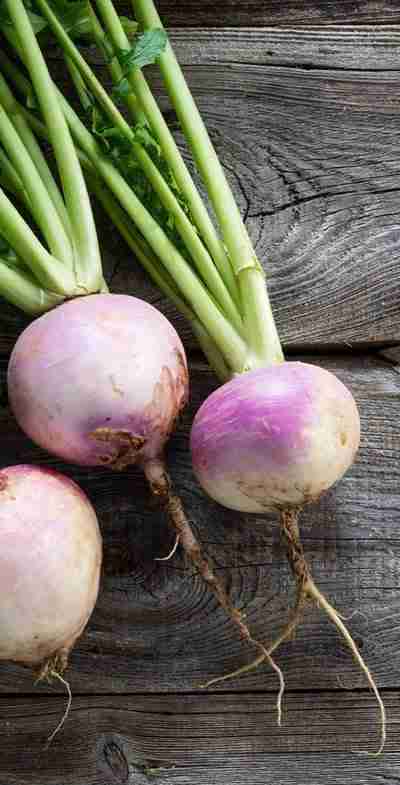
Swedes
Swedes are normally larger in size with a yellow-coloured bottom and a purple top.
Swedes grow more round than turnips and have yellow flesh inside. As the season progresses this will become more orange and flavourful.
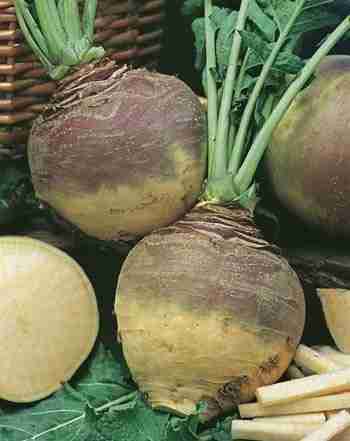
Soil Conditions
Both swedes and turnips like to be planted in the same type of soil conditions. Well-drained but not dry, they need only moderate amounts of fertilizer to grow well.
If your ground is too strong (highly nutritious in fertilizer) you will have growth cracks in the turnips and swedes.
Sowing
The plot where you will grow your turnips and swedes should be in well-drained soil dug down to a depth of 8 to 10 inches and be free of grass clods and weeds.
The soil should be tilled to a fine tilth and rowed into straight rows 24” apart from the centre of one drill to the centre of the other.
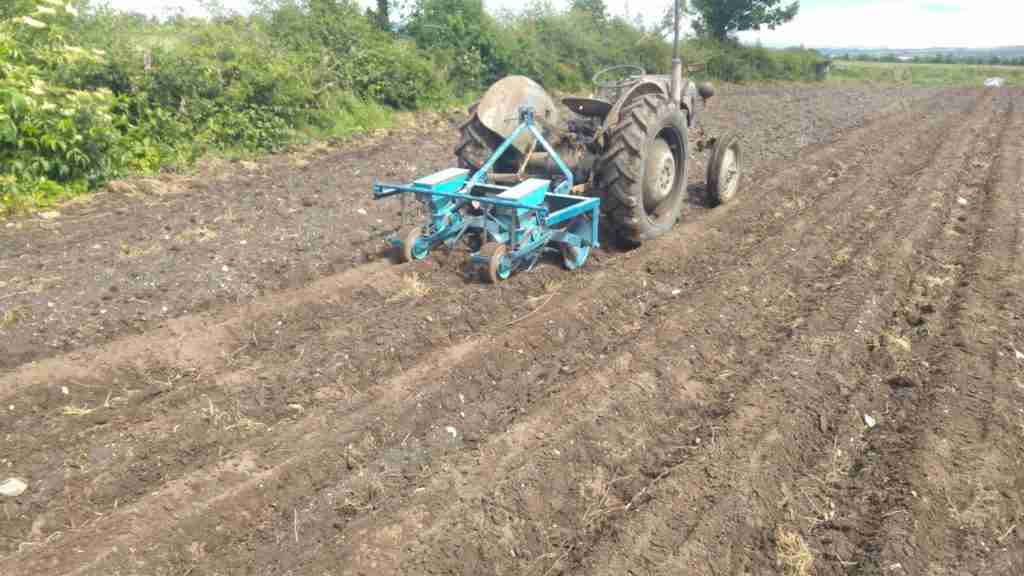
The seeds should be placed along the drill every 6” apart and pushed in 1 to 2” into the soil.
See the Webb precision sower in action in our YouTube channel
How long do turnips take to grow?
Depending on the climate and temperature it takes turnips around 60 days to grow. You can pull them from the ground after 30 days but they will be very small – 1″ to 2″ in diameter. A turnip is better left in the ground for at least 60 days, as it will allow for more flavour to develop in the root and prevents it from tasting too watery or bland.
Swedes prefer an even longer growing season – with many requiring 90 days before developing to full flavoured maturity.
Weeds in turnips
If you can get your hands on a pre-emergence weed spray (herbicide) it would be a really good idea to spray this on 1 to 2 days after sowing.
If you do not use a weed spray you must be on high alert to hoe any weeds away from the turnips or swedes when they are developing.
Within a week you will see the new seedlings appear above the soil.
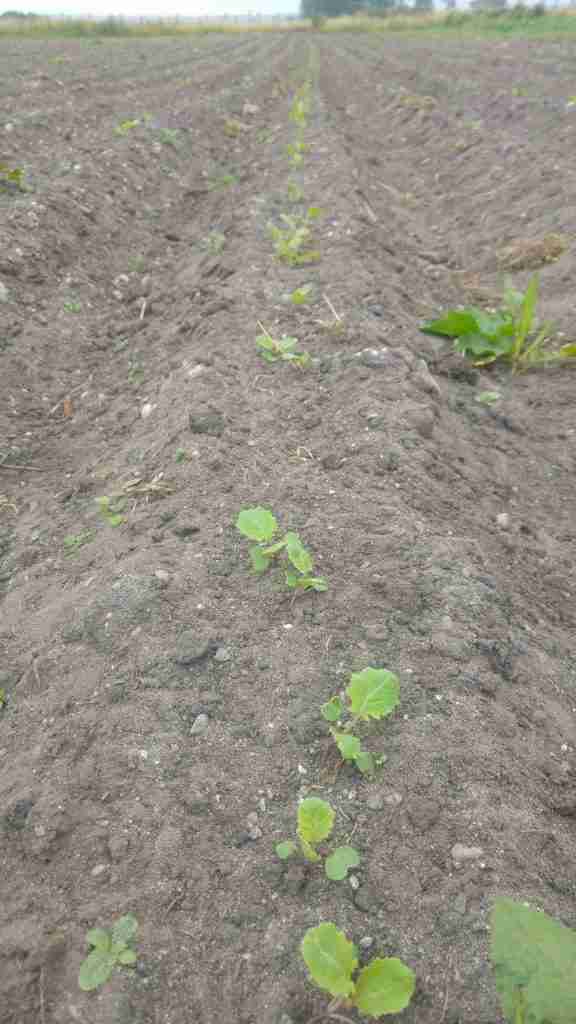
Above- Two weeks after sowing.
These young plants must be kept free of weeds. If not the weeds will smother them and your crop will be lost.
I cannot stress how important it is to keep your turnips and swedes clear of weeds at this early stage.
You are in the clear when their leaves are able to meet along the drills. It can now be assumed they have beat the weeds.
See our modified horse-drawn turnip hoe (weeder) in action!
Boron Deficiency
Swedes and Turnips are both susceptible to boron deficiency. This causes dark brown strings that run through the flesh which leaves it unmarketable.
This does not ruin the turnip for eating -it can be cut out before cooking. It is unsightly and can cause alarm to people who do not know what it is.
Usually, this results in the turnip or swede being deemed bad or rotten which is not actually the case.
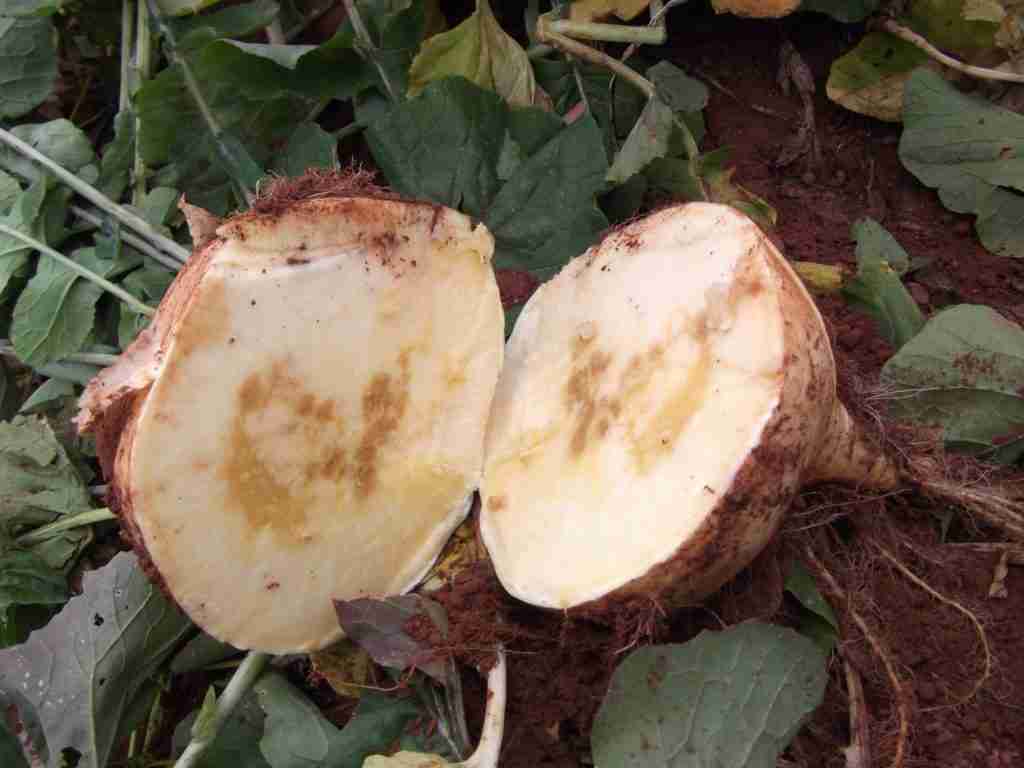
You should get your soil analysis checked and ask if it comes with a boron reading. This can tell you if your soil is low or high in boron, although soil sampling is not a very reliable method. It is rarely high and I would advise you to add boron twice minimum during the growing season.
I would apply boron as a spray as the uptake of boron is limited in dry soil conditions.
The best advice I would give to applying boron is spray it on four times during the growing season. Little and often has been shown to be the most effective method of application.
Pests
A young newly developing turnip or swede has very appealing leaves to rabbits. They are sweet and juicy, so it is usually a good idea to sow your turnips and swedes away from potential danger areas. Hedges and ditches are where rabbits have burrows, so try to avoid these areas.
If you have only one area to sow your seeds, keep them closest to your house away from the ditch or hedge. Wild rabbits do not like to be visible to humans.
Garlic Spray
Another way of dealing with rabbits is to spray garlic extract over the turnips or swede sown area.
This acts as a repellent to the rabbits although in my experience it should be re applied after a few days to keep it effective. I have noticed that the garlic spray does work, but that the sown area should be monitored closely for rabbit activity during these early stages.
The other thing to note is that the garlic spray is really pungent. Keep this in mind if you might be using it near a residential area where you could receive complaints.
Cabbage Root Fly
The Cabbage Root Fly lay their larvae up to 4 times during the growing season from April to September.
They lay their larvae around the base of the swedes or turnips, these larvae burrow into the roots of the plant and eat worm-like paths all around the roots and the base of the plant.
This is unsightly at best when the bulb of the plant is large but if the plant is young it can kill it.
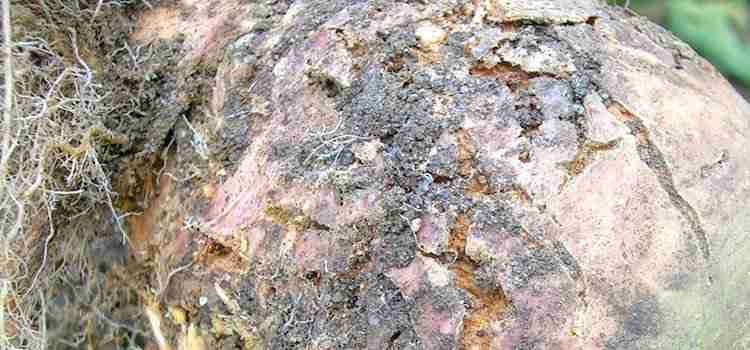
Depending on when you sow your swede or turnip seeds you can avoid the worst attack which occurs in April to May. It is always better to sow your crop at the end of May start of June.
Insect Mesh
For those who rely on their Turnip or Swede crop for an income, a finely woven insect net is placed over the whole plot soon after sowing.
Next, the edges are buried into the soil around the perimeter to provide a complete fly-proof screen to stop the cabbage root fly from laying its larvae on the soil.
This is a great solution and I would advise anyone who can get some to use it.
Harvest
After the turnips have emerged and you have weeded them, the fleece is on and they are closing the drills. If you continue with your spraying program for boron, that is about all you need to do.
The Turnips will be ready for harvesting in September or when they are the right size for your needs. All the work in turnips or swedes goes in the first month- after that is just applying boron and letting them grow out. Great vegetable which keeps in the ground through all weathers. Good Luck.

